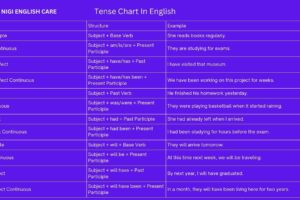
Demonstrative Adjectives in English
Introduction
In the English language, demonstrative adjectives play a vital role in specifying and identifying nouns. They are used to indicate the proximity of an object or person in relation to the speaker. Demonstrative adjectives help create clarity and precision in communication, enabling speakers to point out specific items without ambiguity. In this comprehensive guide, we will delve into the world of demonstrative adjectives in English, exploring their usage, forms, and examples to enhance your understanding of these essential grammatical elements.
What are Demonstrative Adjectives?
Demonstrative adjectives are a type of determiner that modify nouns by indicating their position or location in relation to the speaker. They help answer questions like “Which one?” or “Whose?” by pointing out or specifying the noun. In English, there are four demonstrative adjectives: “this,” “that,” “these,” and “those.”
Forms of Demonstrative Adjectives
a. “This” – Singular Proximity.
The demonstrative adjective “this” is used to refer to a singular noun that is near the speaker. It suggests a close distance or immediate proximity. For example:
- This book is fascinating.
- This car is mine.
b. “That” – Singular Distance
Conversely, “that” is employed to modify singular nouns that are farther away from the speaker. It implies a greater distance compared to “this.” For example:
- That movie was entertaining.
- Look at that building.
c. “These” – Plural Proximity
The demonstrative adjective “these” is used to indicate plural nouns that are close to the speaker. It suggests multiple items that are nearby. For example:
- These cookies are delicious.
- I love these shoes.
d. “Those” – Plural Distance
On the other hand, “those” modifies plural nouns that are farther away from the speaker. It refers to multiple items at a distance. For example:
- Those flowers are beautiful.
- Look at those mountains.
Usage of Demonstrative Adjectives
a. Pointing Out Specific Objects
One of the primary uses of demonstrative adjectives is to single out particular objects or people in a conversation. By using “this,” “that,” “these,” or “those,” speakers can bring attention to a specific item. For instance:
- This pen writes smoothly.
- That house is for sale.
- These students are hardworking.
- I like those shoes.
b. Introducing New Information
Demonstrative adjectives can also be used to introduce new information to the listener. When a speaker refers to an object for the first time, they may use a demonstrative adjective to indicate which item they are discussing. For example:
- I have a new car. This car is red and has leather seats.
c. Demonstrating Differences
Demonstrative adjectives are useful for highlighting differences between items. When comparing objects or people, these adjectives can clarify which one is being discussed. For instance:
- I like this painting, but that one is my favorite.
- These flowers are beautiful, but those are even more vibrant.
Demonstrative Adjectives vs. Demonstrative Pronouns
It’s essential to differentiate between demonstrative adjectives and demonstrative pronouns. Demonstrative adjectives modify nouns, as seen in the examples above. However, when used without a noun, they function as demonstrative pronouns. For instance:
- This is my house. (Demonstrative adjective modifying “house.”)
- This is mine. (Demonstrative pronoun replacing “house.”)
Conclusion
Demonstrative adjectives in English are invaluable tools for specifying and identifying nouns based on their proximity to the speaker. Whether it’s to highlight a particular object, introduce new information, or demonstrate differences between items, these adjectives play a crucial role in everyday communication. By mastering their usage and understanding their forms, you can elevate your English language skills and enhance the clarity of your expressions. So, next time you’re conversing, pay attention to the demonstrative adjectives in play, and you’ll be amazed at how they streamline your communication!



